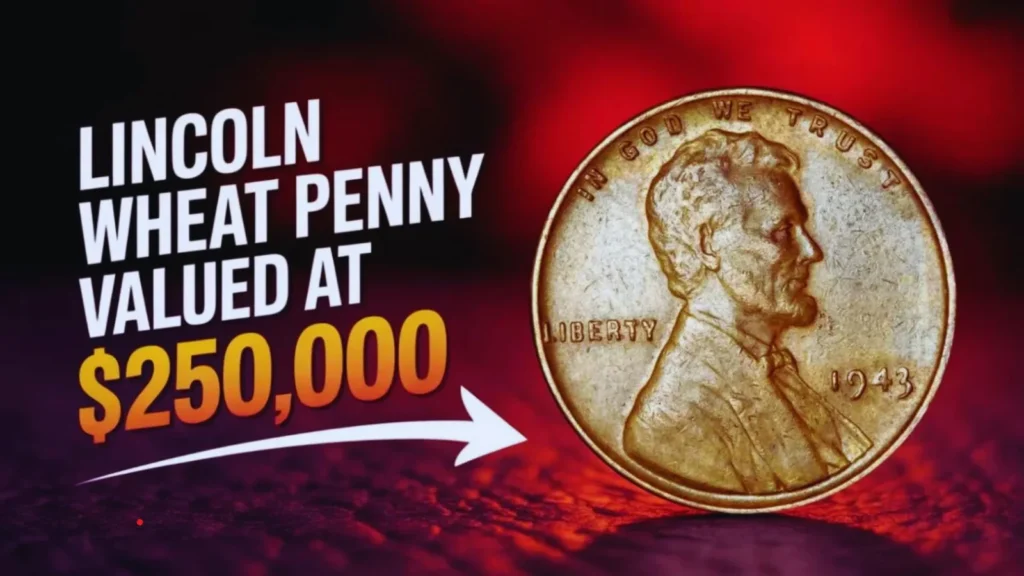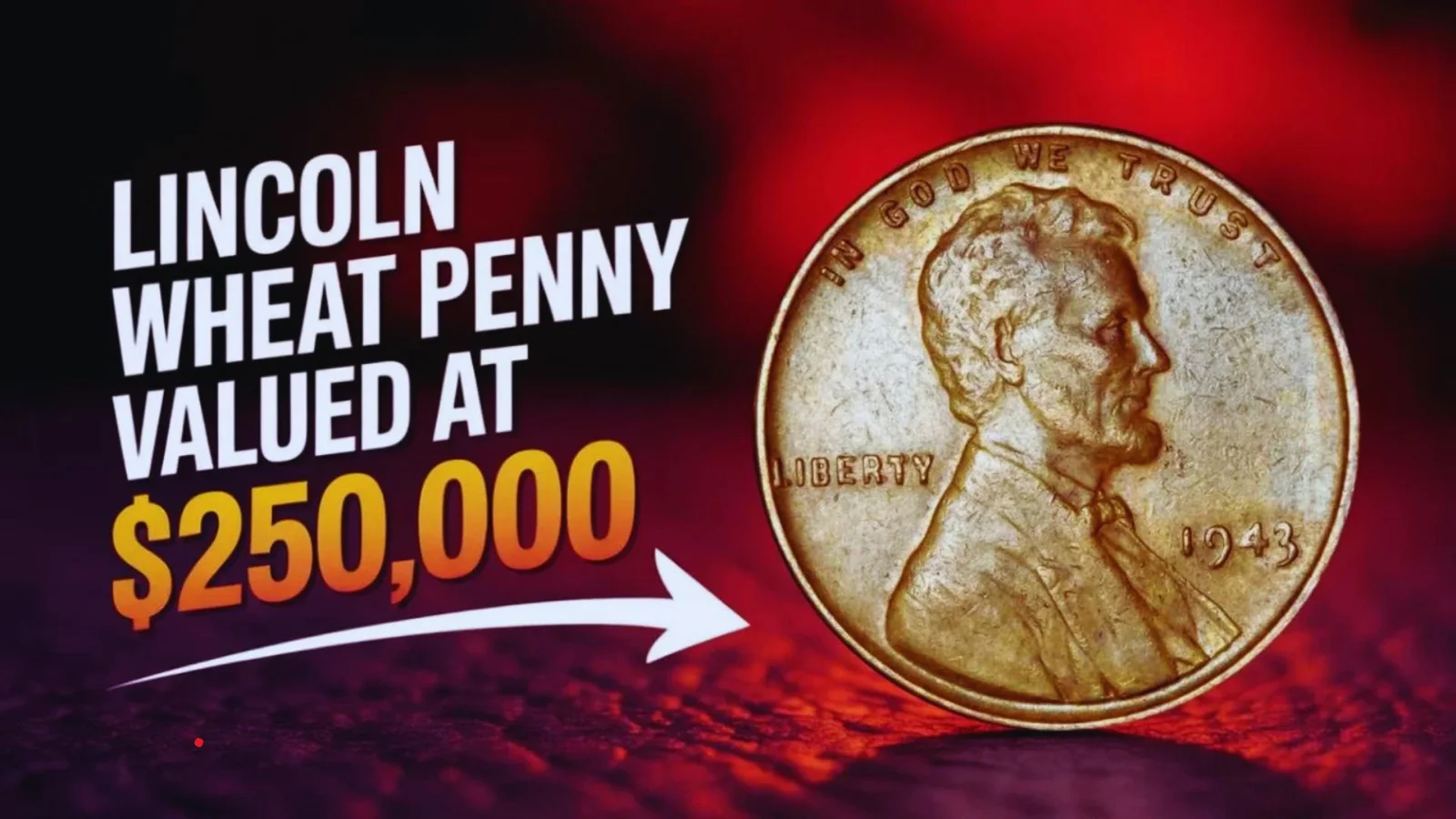Picture this: A humble penny rattling around in your jeans pocket could be worth a quarter-million dollars. The 1943 copper Lincoln Wheat Penny—a wartime minting fluke—is one of the rarest U.S. coins out there, with values soaring from $100,000 to $250,000 for decent examples and up to $1.7 million for pristine gems. Minted during World War II when copper was scarce, only about 20 of these error coins are known to exist, but more could still be circulating in everyday change. If you’re a coin enthusiast or just love a good treasure hunt, here’s everything you need to know about spotting this silver-lining slip-up.
A Quick History of the Lincoln Wheat Penny
The Lincoln Wheat Penny debuted in 1909 to celebrate Abraham Lincoln’s 100th birthday, designed by sculptor Victor David Brenner. It replaced the Indian Head cent and featured Lincoln’s profile on the obverse with wheat stalks on the reverse—hence the “Wheat” nickname. Minted from 1909 to 1958, over 25 billion were produced in bronze (95% copper).
Fast-forward to 1943: World War II demanded every scrap of copper for bullets and shells, so the U.S. Mint switched to zinc-coated steel for pennies that year, churning out over 1 billion of them. But a handful of leftover copper planchets from 1942 snuck into the presses at the Philadelphia, Denver, and San Francisco mints, creating ultra-rare copper versions. These “error” coins are the holy grail of numismatics, blending history, scarcity, and sheer serendipity.

What Makes the 1943 Copper Penny So Valuable?
Rarity is king here—fewer than 30 authenticated examples exist across all mints, compared to billions of common steel pennies. The error happened because of rushed wartime production, and many were likely melted down or spent unknowingly. Values explode based on condition (graded on a 1–70 scale by pros like PCGS or NGC) and mint mark:
| Mint Mark | Known Examples | Value Range (USD) | Record Sale |
|---|---|---|---|
| Philadelphia (No Mark) | ~15 | $100,000–$250,000 | $100,000+ (average condition) |
| Denver (D) | 1 | Up to $1.7 million | $1.7M (2010 auction) |
| San Francisco (S) | ~6 | $100,000+ | $200,000+ (recent sales) |
That 2010 Denver sale? It shattered records, proving these pennies aren’t just change—they’re change-makers.
How to Spot a Potential $250K Penny
Don’t toss that 1943 penny yet! Here’s your field guide to ID’ing a winner:
- Date Check: Look for “1943” on the obverse—skip if it’s not.
- Magnet Test: Grab a fridge magnet. Steel pennies stick; genuine copper ones slide right off (copper’s non-magnetic).
- Weight It: Copper pennies tip the scales at 3.11 grams; steel at 2.7 grams.
- Mint Mark: Hunt under the date for “D” (Denver) or “S” (San Francisco)—no mark means Philly.
- Condition Scan: Pristine (no scratches, sharp details) commands top dollar; circulated ones still fetch six figures.
- Fake Alert: Counterfeits abound—altered 1948 pennies or copper-plated steel. Always get a pro appraisal from PCGS or NGC.
Pro Tip: Rummage through old jars, bank rolls, or estate finds. In 2019, a kid unearthed one from his grandpa’s stash, netting a cool six figures.
Tips for Aspiring Coin Hunters
Turning pocket change into profit is easier than you think:
- Hunt Smart: Buy penny rolls from banks for cheap thrills—$0.50 gets you 50 coins to scan.
- Protect Your Finds: Store suspects in plastic holders to avoid wear; never clean them (it tanks value).
- Get Graded: Ship to PCGS or NGC for authentication—costs $20–$50 but unlocks auctions.
- Join the Club: Forums like CoinTalk or local numismatic societies offer free advice and spotting tips.
- Start Small: Grab a “Red Book” (A Guide Book of United States Coins) for $15 to learn the ropes.
Remember, even non-1943 Wheat Pennies can shine— the 1909-S VDB or 1914-D fetch up to $100K.
Common Questions Answered
- What’s the difference between 1943 steel and copper pennies? Steel: Common, magnetic, wartime default. Copper: Rare error, non-magnetic, potential payday.
- How do I know if my penny’s valuable? Magnet test first, then pro grading—don’t trust online “experts.”
- Other hot Lincoln Wheat Pennies? Yes—1909-S VDB ($100K+), 1914-D ($150K+), or 1955 doubled die ($1,000+).
- Can I still find one in circulation? Absolutely—stories pop up yearly; the odds are slim, but the thrill’s free.
- Worth selling if I find one? Consult a dealer first, then auction via Heritage or Stack’s Bowers for max value.
Why Hunt for Hidden Treasures?
In a digital age of crypto and apps, the tactile joy of coin collecting—rooted in history and hope—feels like striking gold. That $250K Lincoln Wheat Penny isn’t just a windfall; it’s a reminder that fortune favors the curious. So next time you’re at the laundromat or grocery checkout, pause and ponder: Could this be the one? Grab your magnet and start scanning—your portfolio (and story) might thank you. For more numismatic nuggets, hit up PCGS.com or NGCcoin.com. Happy hunting!
